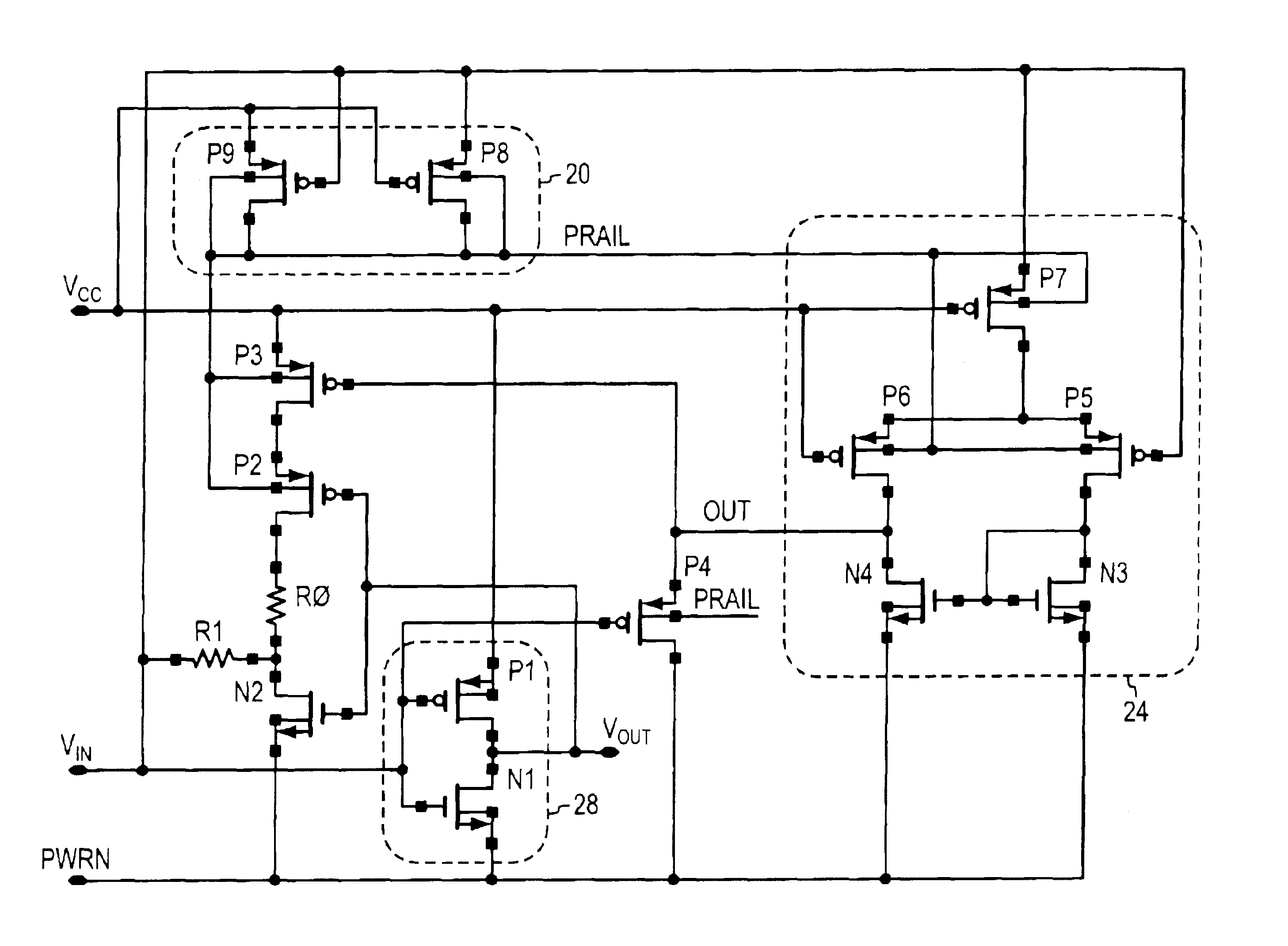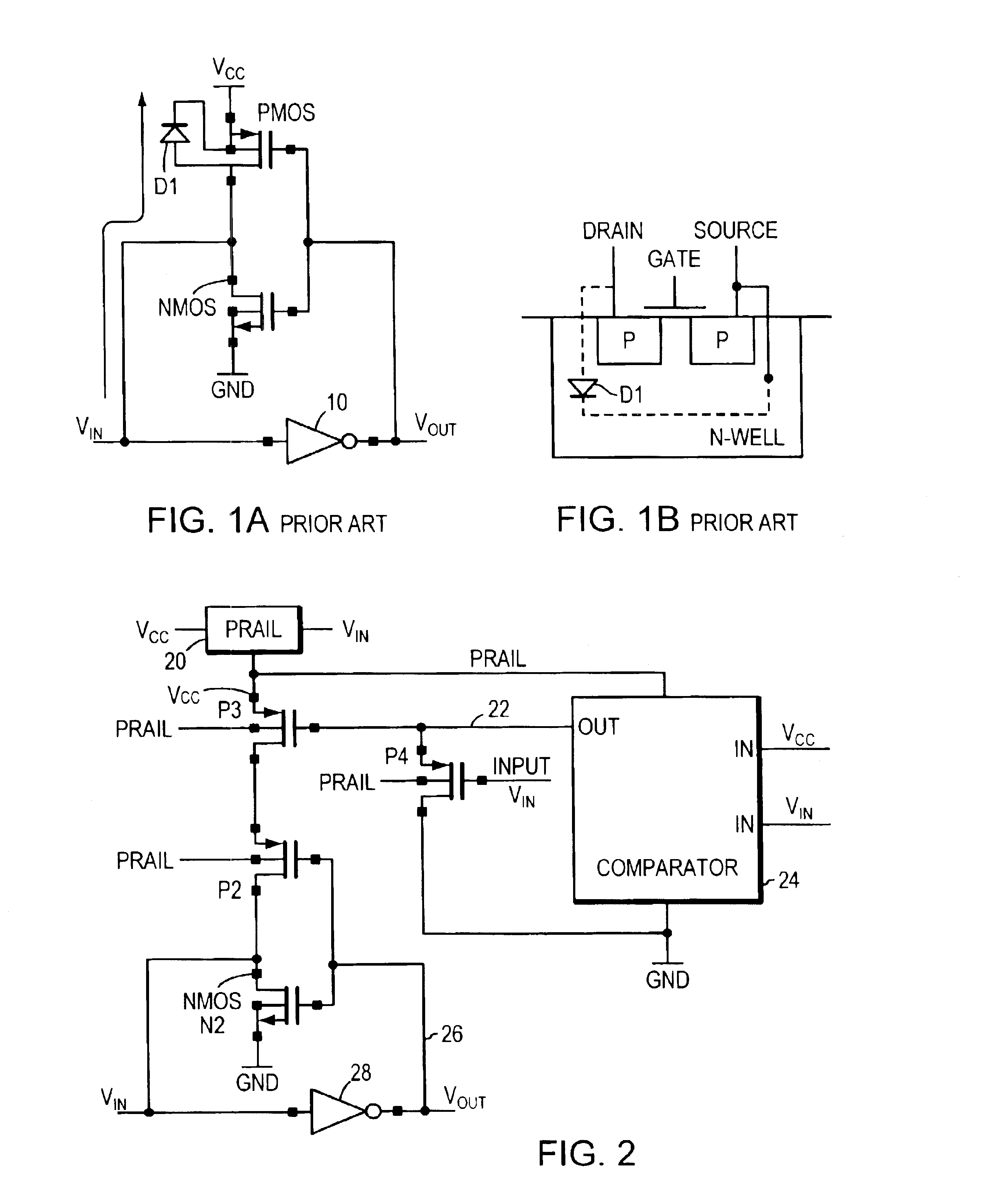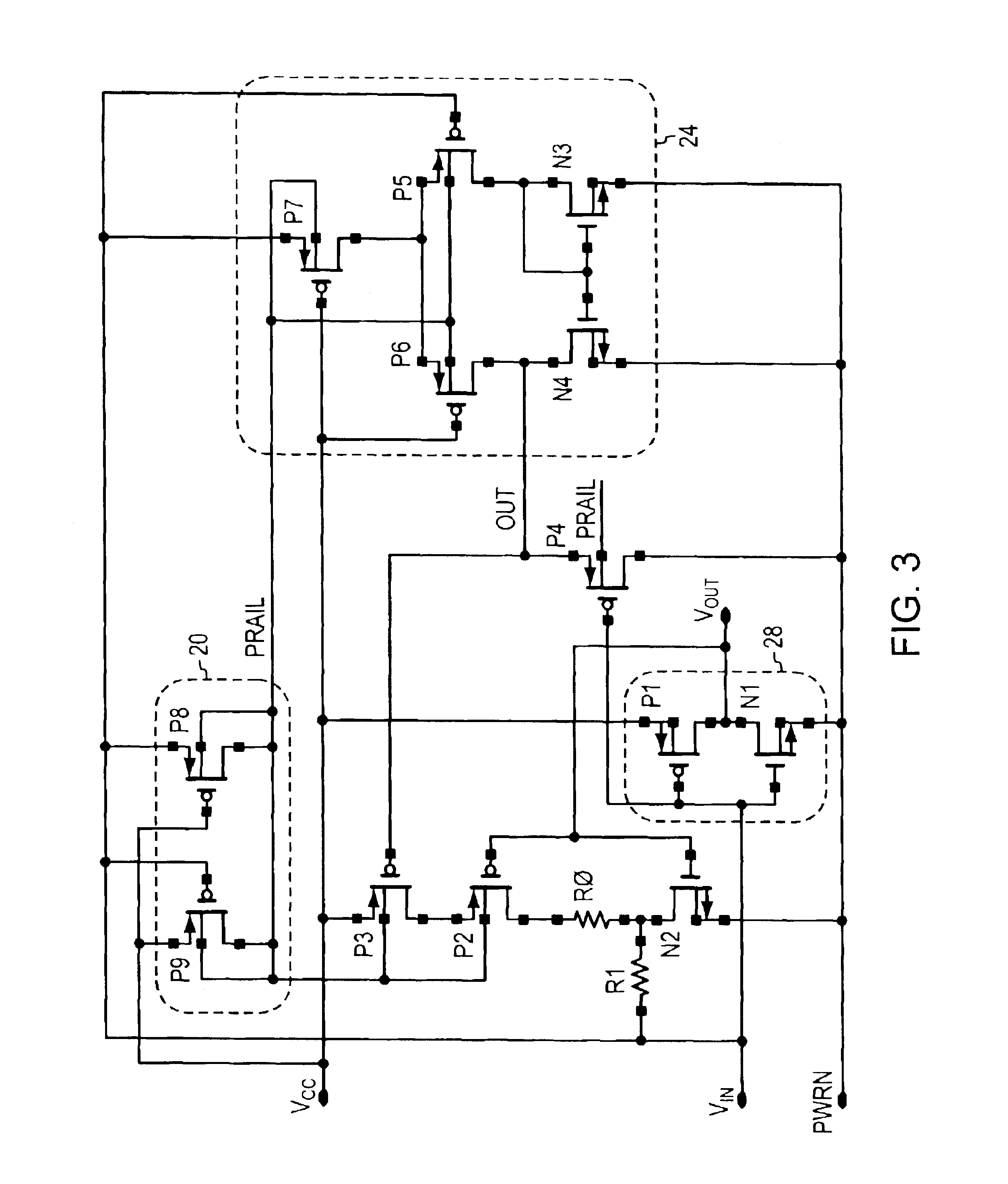Bus hold circuit with power-down and over-voltage tolerance
- Summary
- Abstract
- Description
- Claims
- Application Information
AI Technical Summary
Benefits of technology
Problems solved by technology
Method used
Image
Examples
Embodiment Construction
. 2 in block form illustrates the approach of the present invention. In this circuit a separate power connection, referred to as a prail, is arranged to power part of the circuitry of the bus hold with the higher of Vin or Vcc as determined from the prail arbiter circuit 20 as discussed below. In this block diagram P3 connects Vcc to the latching inverter made up of N2 and P2. When Vin exceeds Vcc, P3 is turned off and prevents leakage current from flowing from Vin to Vcc as described with respect to FIG. 1A. Notice that the prail provides power only to the N-wells of the PMOS transistors which removes the leakage path from Vin to Vcc when Vin is larger than Vcc.
With respect to FIG. 2, three conditions are examined:
First, the "normal" condition when Vin is at a logic low. In this condition Vcc appears on the prail through the arbiter circuit 20; P4 is turned on driving the gate of P3 low turning it on. Vcc powers the feedback inverter comprising P2 and N2 via the source of P2. Under...
PUM
 Login to View More
Login to View More Abstract
Description
Claims
Application Information
 Login to View More
Login to View More - Generate Ideas
- Intellectual Property
- Life Sciences
- Materials
- Tech Scout
- Unparalleled Data Quality
- Higher Quality Content
- 60% Fewer Hallucinations
Browse by: Latest US Patents, China's latest patents, Technical Efficacy Thesaurus, Application Domain, Technology Topic, Popular Technical Reports.
© 2025 PatSnap. All rights reserved.Legal|Privacy policy|Modern Slavery Act Transparency Statement|Sitemap|About US| Contact US: help@patsnap.com



